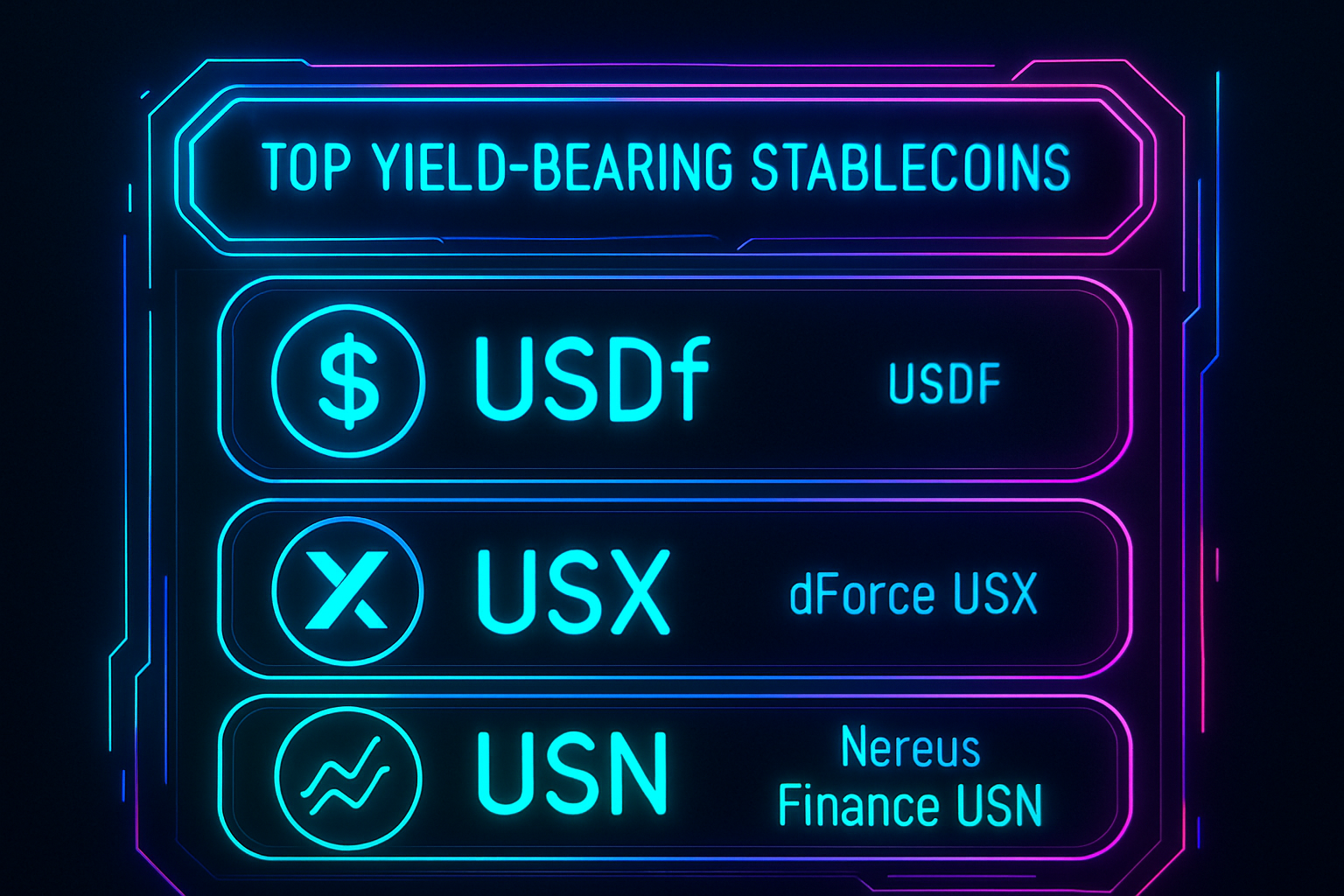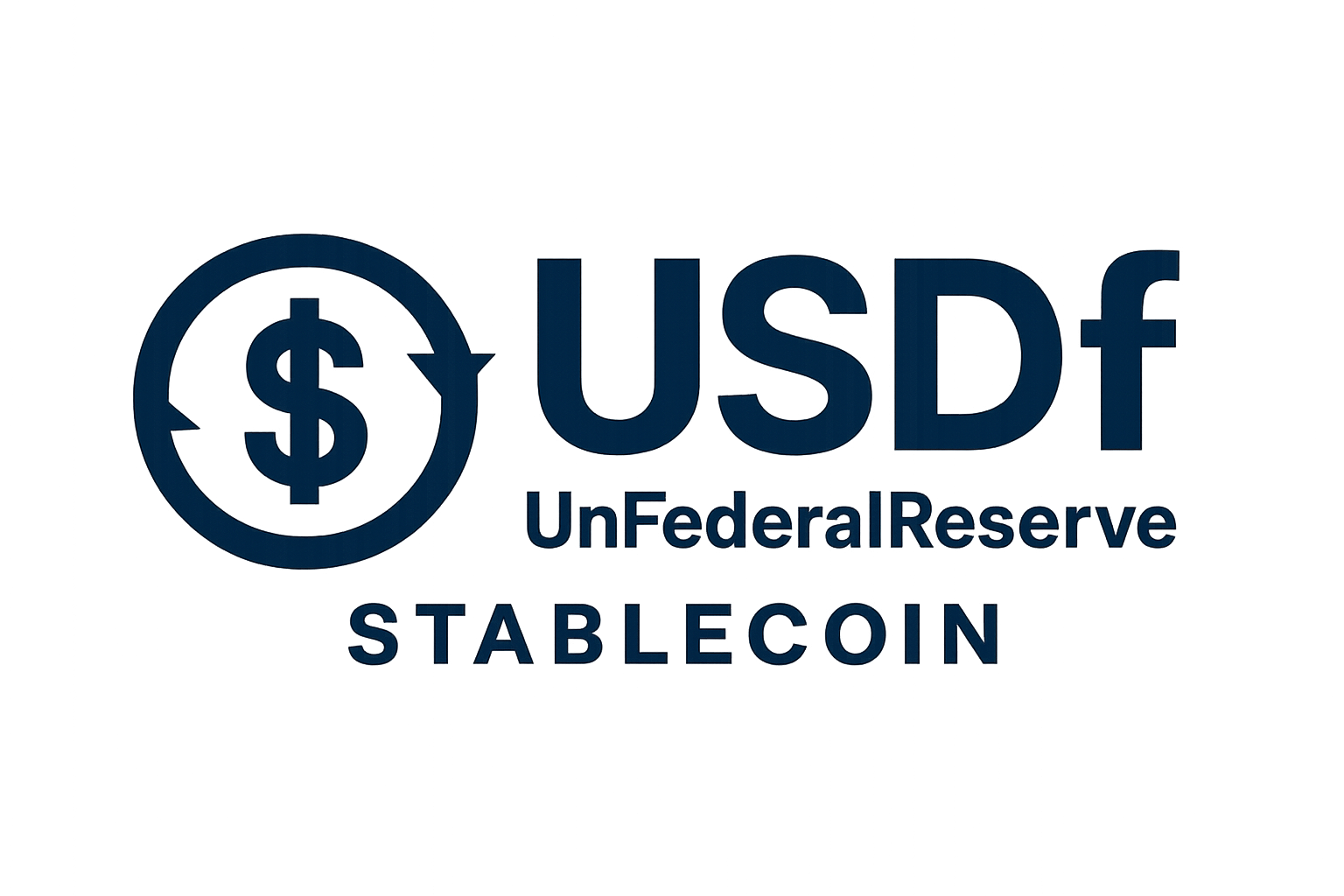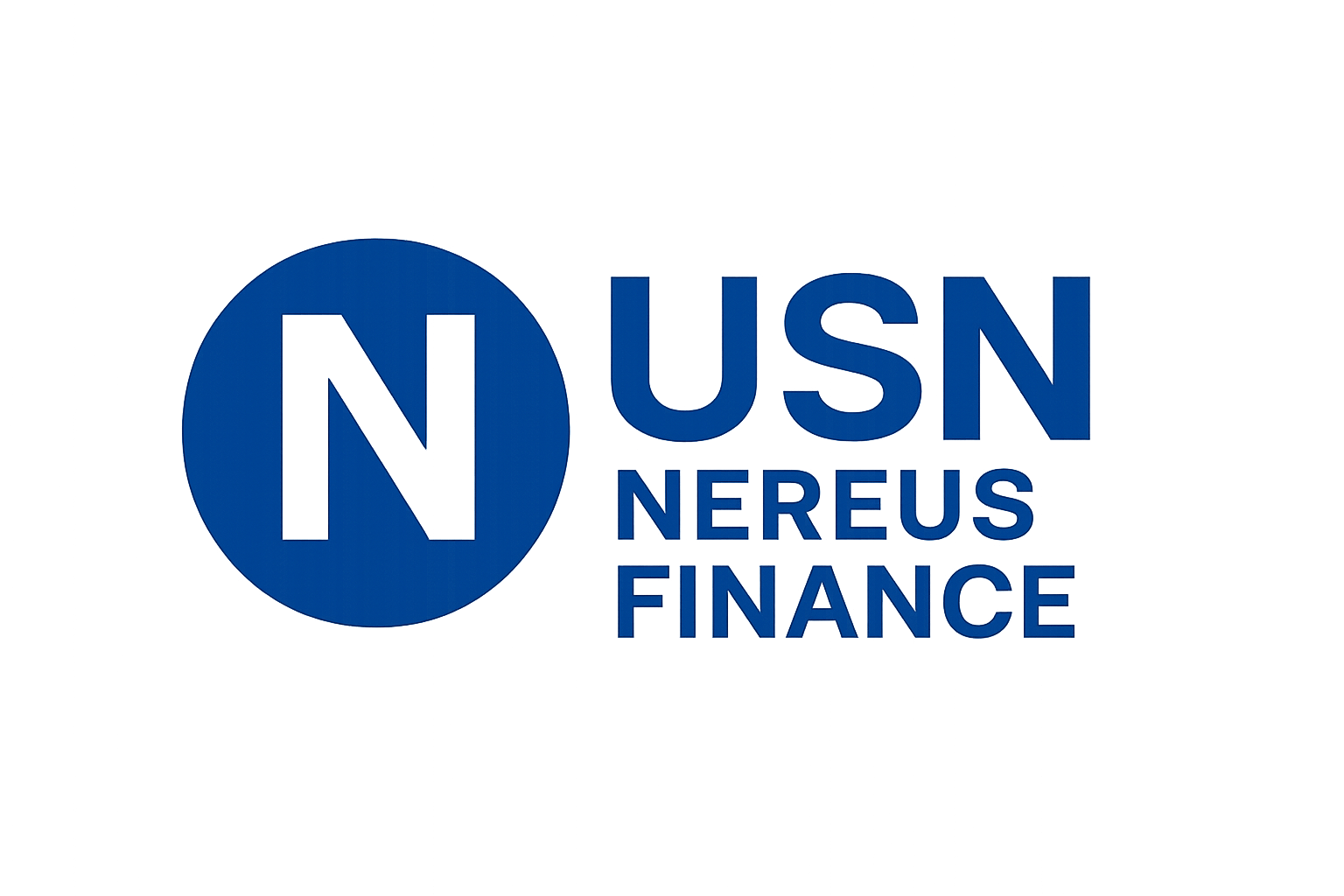
Yield-bearing stablecoins have emerged as a cornerstone for passive income strategies in decentralized finance (DeFi). As of October 2025, investors are increasingly turning to these innovative assets to earn competitive yields while mitigating the volatility often associated with crypto markets. Among the multitude of options, three stablecoins stand out for their robust adoption, yield performance, and strategic integration with DeFi protocols: USDf (UnFederalReserve USDf), USX (dForce USX), and USN (Nereus Finance USN).

Why Yield-Bearing Stablecoins Dominate DeFi Passive Income
The appeal of yield-bearing stablecoins is rooted in their ability to offer stable value while providing consistent returns. Unlike traditional stablecoins that simply track the US dollar, these tokens generate yield through sophisticated mechanisms such as on-chain lending, arbitrage strategies, or staking. In 2025, the best-performing assets in this category have consistently delivered quoted rates between 4% and 9% APY, substantially higher than most savings accounts or money market funds.
According to market data:
- USDf: $0.997855 USD (slight decrease of 0.00146%)
- USX: $1.00 USD (stable)
- USN: $1.00 USD (minor increase of 0.00057%)
This price stability, combined with attractive yields, positions these assets at the forefront of DeFi passive income strategies.
Top 3 Yield-Bearing Stablecoins for Passive Income
-

USDf (UnFederalReserve USDf):USDf stands out with a market capitalization of approximately $573 million and a recent price of $0.997855 (as of October 7, 2025). Powered by Falcon Stable, it generates yield through diversified, market-neutral strategies, including funding rate arbitrage, cross-exchange trading, staking, and liquidity provision. USDf is known for its robust risk management and transparent backing by a diversified crypto portfolio.
-

USX (dForce USX):USX, issued by dForce, is a Solana-native stablecoin trading at $1.00 (as of October 7, 2025). It is fully backed 1:1 by stable collateral and offers permissionless access to institutional-grade yields via its YieldVault program, which utilizes delta-neutral strategies. USX launched with over $160 million in total value locked (TVL), emphasizing transparency with real-time proof of reserves.
-

USN (Nereus Finance USN):USN provides holders with a minimum APY of 11%, with some lenders receiving up to 20% APY. It is currently trading at $1.00 (as of October 7, 2025), with a minor price increase of 0.00057% from the previous close. While USN offers some of the highest yields in DeFi, its long-term sustainability has been questioned, so investors should evaluate risk accordingly.
Comparing Yield Generation Strategies: USDf vs. USX vs. USN
The core differentiator among leading yield-bearing stablecoins lies in their approach to generating returns:
- USDf (UnFederalReserve USDf): Leverages a diversified portfolio of cryptocurrencies and employs market-neutral strategies such as funding rate arbitrage, cross-exchange trading, native staking, and liquidity provision. This multifaceted approach has allowed USDf to post an average 7-day APY as high as 8.98%, according to recent industry reports.
- USX (dForce USX): Built on dForce’s protocol stack, USX is backed by a basket of collateralized digital assets. Its yield comes from algorithmic lending markets and delta-neutral trading strategies within dForce’s ecosystem. The protocol’s transparency and composability make it a favorite among risk-conscious DeFi users.
- USN (Nereus Finance USN): Offers some of the highest headline yields in the sector, with a minimum advertised APY of 11%, sometimes reaching up to 20%. However, these elevated rates raise questions about long-term sustainability based on past experiences with similar projects.
This diversity in strategy means investors must weigh not only potential returns but also the underlying mechanisms that support them.
Ecosystem Integration and Risk Considerations
A crucial aspect when evaluating yield-bearing stablecoins is their integration within major DeFi ecosystems:
- USDf: Widely adopted across lending protocols and liquidity pools due to its transparent backing structure.
- USX: Deeply integrated into dForce’s multi-chain architecture, enabling seamless composability with other DeFi primitives.
- USN: While offering high yields via Nereus Finance’s proprietary platform, its broader ecosystem affiliations are less defined compared to peers.
The risk profile for each asset varies accordingly. While both USDf and USX emphasize transparency, providing real-time proof-of-reserves or over-collateralization, USN’s model relies heavily on maintaining high inflows to sustain its headline rates.
Market participants should also consider liquidity depth and redemption mechanisms. USDf benefits from robust secondary market support, making it relatively easy to enter or exit positions without significant slippage. USX leverages the dForce protocol’s cross-chain bridges and lending pools, which enhances its utility in yield optimization strategies. In contrast, USN offers compelling yields but may present challenges around liquidity during periods of elevated volatility or declining demand.
Real-Time Price Performance and Volatility
Price stability remains a critical metric for any yield-bearing stablecoin. As of October 7,2025, market data shows:
- USDf: $0.997855 USD (down 0.00146%)
- USX: $1.00 USD (unchanged)
- USN: $1.00 USD (up 0.00057%)
This level of stability is essential for passive income seekers who prioritize capital preservation alongside yield generation. Even minor deviations from the $1 peg can impact returns when compounded over time, so monitoring these metrics is vital for effective risk management.
Price Comparison of Top Yield-Bearing Stablecoins: USX, USDf, and USN
6-Month Price Performance Snapshot as of October 7, 2025
| Asset | Current Price | 6 Months Ago | Price Change |
|---|---|---|---|
| USX Stablecoin (USX) | $1.00 | $1.00 | +0.0% |
| Falcon USD (USDf) | $0.9975 | $1.00 | -0.3% |
| Noon USN (USN) | $1.00 | $1.00 | +0.0% |
Analysis Summary
All three stablecoins—USX, USDf, and USN—have maintained strong price stability over the past six months, with USX and USN holding their $1.00 peg exactly, and USDf experiencing only a minor deviation of -0.3%. This reflects the robust peg mechanisms and stability of leading yield-bearing stablecoins in the current DeFi landscape.
Key Insights
- USX and USN have shown perfect price stability, maintaining their $1.00 peg over the past 6 months.
- USDf experienced a slight decrease of -0.3%, but remains very close to its $1.00 target.
- None of the compared stablecoins experienced significant depegging or volatility, underscoring their reliability for passive income strategies.
- The minor fluctuation in USDf highlights the importance of monitoring even small deviations in stablecoin prices for risk management.
This comparison uses real-time market data as of October 7, 2025, with historical price references from exactly six months prior. All price points and changes are sourced directly from the provided real-time data feeds, ensuring accuracy and transparency in the comparison.
Data Sources:
- Main Asset: https://www.coingecko.com/en/coins/usx/historical_data
- Falcon USD: https://octopustracker.com/stablecoins/
- Noon USN: https://octopustracker.com/stablecoins/
- Tether: https://octopustracker.com/stablecoins/
- USD Coin: https://octopustracker.com/stablecoins/
- Dai: https://octopustracker.com/stablecoins/
- Binance USD: https://octopustracker.com/stablecoins/
- Legacy Frax Dollar: https://octopustracker.com/stablecoins/
Disclaimer: Cryptocurrency prices are highly volatile and subject to market fluctuations. The data presented is for informational purposes only and should not be considered as investment advice. Always do your own research before making investment decisions.
Yield Sustainability: Lessons from Past Cycles
The allure of double-digit APYs has historically attracted capital inflows to new stablecoin projects. However, investors should remember that elevated yields often coincide with higher risk profiles or unsustainable incentive programs. The recent history of algorithmic stablecoins underscores the importance of scrutinizing collateral quality, on-chain transparency, and ecosystem incentives.
USDf’s diversified yield sources and transparent reporting have contributed to its resilience during volatile periods. USX’s delta-neutral approach aligns with best practices in risk-adjusted DeFi yields by minimizing directional exposure while generating consistent returns. Meanwhile, USN’s high-yield promise is appealing but requires ongoing diligence as market conditions evolve.
Key Takeaways for Yield-Bearing Stablecoin Investors in 2025
- Diversification matters: Allocating across multiple yield-bearing stablecoins can mitigate protocol-specific risks.
- Sustainability over hype: Prioritize protocols with transparent reserves and proven track records rather than chasing the highest APY headline.
- Ecosystem integration: Tokens embedded within well-established DeFi stacks tend to offer greater utility and security.
- LTV ratios and redemption policies: Always review loan-to-value thresholds and redemption mechanics to avoid unexpected losses during market stress.
The evolution of yield-bearing stablecoins like USDf (UnFederalReserve), USX (dForce), and USN (Nereus Finance) signals a maturing DeFi landscape where passive income opportunities are increasingly accessible yet demand rigorous due diligence. By focusing on transparency, sustainable yields, and robust ecosystem integration, investors can position themselves to benefit from the next wave of stablecoin adoption while managing downside risks effectively.






